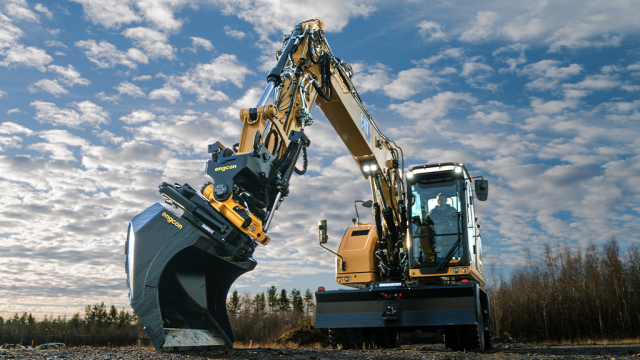Why Are Duct Access Doors Essential for Efficient HVAC Systems in Construction?
Ensuring HVAC systems run efficiently is key to maintaining comfortable and energy-saving buildings. However, one small detail often gets overlooked: duct access doors. These doors make HVAC systems easier to inspect, maintain, or repair. In this blog post, we’ll explain why duct access doors are necessary for HVAC systems in construction projects. Overview of the […] The post Why Are Duct Access Doors Essential for Efficient HVAC Systems in Construction? appeared first on World Construction Today.

Ensuring HVAC systems run efficiently is key to maintaining comfortable and energy-saving buildings. However, one small detail often gets overlooked: duct access doors. These doors make HVAC systems easier to inspect, maintain, or repair.
In this blog post, we’ll explain why duct access doors are necessary for HVAC systems in construction projects.
Overview of the HVAC Systems in Construction
Heating, Ventilation, and Air Conditioning or HVAC systems are important for regulating temperature, airflow, and overall air quality in buildings. They ensure that spaces remain comfortable, regardless of external weather conditions.
Efficiency is crucial for HVAC systems, as poorly functioning HVAC units can lead to higher energy consumption, driving up utility costs. One of the biggest challenges in maintaining HVAC systems is accessing various parts of the ductwork and internal components.
Many of these systems are installed in hard-to-reach areas, making regular inspections, cleaning, and repairs complex and time-consuming.
What Are Duct Access Doors?
Duct access doors are hinged panels installed in HVAC ductwork to allow technicians easy access to specific system parts. Their main purpose is to provide a convenient way for technicians to inspect, clean, and repair ducts or internal components without dismantling sections.
These doors provide direct access to critical areas, making maintenance faster and more efficient, helping keep HVAC systems running smoothly and extending their lifespan.
Types of Duct Access Doors
Several types of duct access doors are designed to meet different needs in HVAC systems. Here’s a quick look at the most common options used in construction projects:
- Duct Access Door for High-Pressure Ducts: These access doors can withstand the demands of high-pressure HVAC systems. They are built with strong materials to ensure they can handle the increased pressure without compromising the integrity of the ductwork.
- Self-Stick Duct Panel: Self-stick duct panels, like the HDSS-6020 duct access door, are a convenient option for quick access to ductwork. They come with an adhesive backing, allowing easy installation without additional hardware.
- Hinged Access Door: Hinged access doors are designed for easy opening and closing, making them suitable for areas that require frequent inspections and maintenance, such as mechanical rooms, basements, rooftops, or server rooms. They are typically made from durable materials that can withstand various environmental conditions.
- Fiberglass Hinged Duct Access Door: Fiberglass hinged access doors are lightweight and corrosion-resistant, making them suitable for environments where moisture is a concern. This door type is particularly useful in commercial settings where maintaining air quality and efficiency is essential.
- Walk-Through Access Door: Walk-through access doors are larger and designed for areas that require personnel to enter the duct system. These doors allow technicians to move easily in and out while carrying tools and equipment. They are especially beneficial in larger HVAC systems, ensuring safe and efficient access for routine maintenance and inspections.
Key Benefits of Duct Access Doors for Efficient HVAC Systems
As said, duct access doors are essential for efficient HVAC systems, offering numerous benefits that enhance performance and maintenance. Here are some of their key advantages:
- Enhanced Energy Efficiency: Access doors help ensure ducts remain free of debris and blockages by allowing regular cleaning and maintenance. Improved airflow can lead to lower energy consumption and reduced utility costs.
- Increased System Longevity: Easier access to critical components allows for timely repairs and adjustments, preventing minor issues from escalating into major problems.
- Improved Indoor Air Quality: Access doors facilitate routine cleaning of ducts and filters, helping maintain better indoor air quality. This improved air quality is particularly important in commercial spaces where air quality can significantly impact occupant health and comfort.
- Compliance With Building Codes: Many building codes and regulations require access points for HVAC systems to ensure proper maintenance and safety. Installing duct access doors helps ensure compliance with these regulations, lowering the risk of fines and improving overall system reliability.
Things to Consider When Choosing Duct Access Doors
Duct access doors are often tailored to meet specific project needs, codes, and regulations. They are typically made of durable materials that can withstand the demands of construction and future maintenance.
That being said, it’s essential to consider several factors to ensure you get doors that meet requirements and contribute to the long-term efficiency of the structure.
- Ease of Installation: Opt for doors that can be easily installed in new construction and renovation projects, reducing time and effort.
- Compliance With Codes: Make sure the doors meet local building codes and industry standards for security and accessibility, avoiding non-compliance issues.
- Accessibility: Choose door placements that allow easy access for maintenance and inspections without disrupting the surrounding structure.
- Compatibility with HVAC Systems: Ensure that they are designed to integrate smoothly with the specific HVAC system, including high-pressure ducts or areas prone to moisture.
- Size and Fit: Select doors correctly sized for the ductwork and components they need to access, preventing future adjustments.
Conclusion
Duct access doors are essential for efficient HVAC systems in construction. They serve as critical components that facilitate maintenance and enhance system performance. Their role in supporting compliance with building codes and reducing long-term maintenance costs further underscores their importance in construction projects.
Ultimately, investing in high-quality duct access doors promotes a well-functioning HVAC system and contributes to the overall comfort and sustainability of the built environment.
The post Why Are Duct Access Doors Essential for Efficient HVAC Systems in Construction? appeared first on World Construction Today.

 machineryasia
machineryasia 







